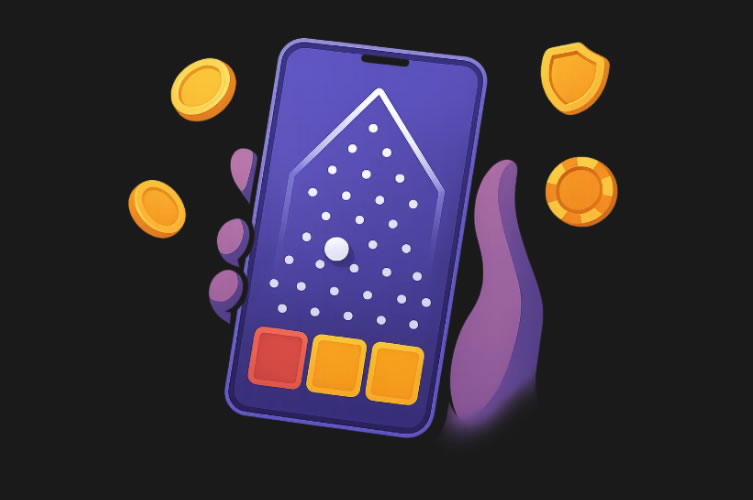Plinko game habits for clear, short sessions worldwide
I treat this as a small, repeatable break. A ball falls, hits pegs, and reaches a slot with a posted multiplier. The action is brisk, so my plan is brisk too: tiny stakes, short blocks, clean records, and a firm stop. I write in plain words after each block so the next one is easier to run. I skip hype and avoid “hot” talk; it distracts me from the only parts I can control—stake size, time on task, and whether my tools are tidy. When the timer rings, I leave. That habit keeps the hobby light and lets me enjoy the bounce without turning it into a grind.

A simple setup that keeps sessions light
Before the first drop, I adjust the screen, mute sound, and pick a board I can read at a glance. I test row counts until the path feels clear but not crowded. My first block is small on purpose; comfort is the goal, not profit. I breathe out, relax my shoulders, and check that the interface shows stake, recent history, and payout mapping in one view. If I see stutter or clutter, I switch fast. I want a loop that starts in seconds, responds to clicks without delay, and doesn’t bury basic options. A clean loop lowers mistakes that look like losses but are really just rushed hands.
In the second minute of setup, I run a quick demo on a trusted hub to reset my expectations. On hubs such as plinko I remind myself that each bounce is random and my job is to manage the frame around it—time, stake, and energy. I prefer boards that let me toggle risk tiers and drop speed without leaving the main view. If the terms read like normal text and a receipt appears after every result, I’m ready for a tiny live block. If pages stall or menus hide key toggles, I do not “power through.” I close the tab and find a build that respects my time and attention.
- Keep the stake small for the entire first block.
- Put a timer next to the screen and end when it rings.
- Use a board that shows stake, history, and payouts together.
My three numbers and one timer
I start each block by writing three numbers on a sticky note: stake per drop, number of drops, and two stop lines (one for gains, one for losses). The note sits in view so I don’t negotiate with myself mid-run. If the board allows low, medium, and high risk, I begin in the middle and hold that choice for the full block. When I feel tilt—faster clicks, tight jaw, restless eyes—I pause, drink water, and either finish the block calmly or end early. The purpose is not to “beat” a board; it is to keep a rhythm I can repeat tomorrow. Staying small and steady keeps this hobby fun and easy to step away from.
What a good app or board must do
A good build feels invisible. I tap, the ball drops, the result posts, and I can act on it right away. I look for clear text, calm colors, and buttons placed within easy reach on mobile. A tidy history log and a simple help page save me from digging through menus. If the board supports screenshots without overlays and exports receipts cleanly, I keep it in rotation. A solid plinko app also makes deposits and cashouts boring—in the best way. No forced pop-ups, no strange links, no mystery delays. If any part of the flow feels vague, I leave before the first live drop.
I also read the fairness notes. A brief line on licensed operation, audits, and random draws tells me whether to invest time. I test the help channel with a small question and judge by speed and clarity, not tone. A short, direct reply earns trust; a canned wall of text does not. When I try landscape and portrait on my phone, I notice how my thumb rests and whether the drop button invites mistakes. These details matter. They keep the session calm and reduce errors that masquerade as bad luck when they’re really UI friction.
Here’s a quick reference I keep near the keyboard before I commit real play:
|
😊 Signal |
What I look for |
Why it matters |
|
🚀 Quick start |
A drop begins within seconds |
Short prep preserves focus |
|
🔒 Plain terms |
License note and RNG policy in clear text |
Transparency builds trust |
|
💬 Fast help |
Specific answers that solve the issue |
Problems end before they grow |
Speed, clarity, and support
Speed keeps the loop short, which helps me stick to limits. Clarity means I can read the payout map and my past drops without squinting or guessing. Support is my safety net when something odd happens—an error message, a duplicate receipt, a delayed confirmation. I run a tiny live test: one deposit, a handful of drops, one small cashout. If everything feels smooth and boring, that’s a good sign. If I see stalls or “please retry” loops, I do not escalate; I exit. With a clean build, my attention stays on the routine, not on troubleshooting—and that’s the whole point.
- Try demo first, then one tiny live block.
- Verify the history log updates instantly.
- Take one screenshot of terms for your records.
Reading randomness with no myths
I frame the board as a chain of micro-choices I cannot steer. The ball meets a peg, shifts left or right, and repeats until it lands. Because my input ends at the drop, I center my energy on what happens before and after: preparation, pace, and exit. I still pick drop points to keep the act playful, but I don’t defend them as theory. Words guide behavior, so I avoid “due,” “hot,” or “rigged” in my notes. Clean language keeps me from chasing patterns that don’t exist and lets me enjoy the bounce as a brief, focused task.

When friends ask how to begin, I suggest a simple demo to check comfort and a tiny live sequence to test the record-keeping. If they want one place to practice the routine, I point them to run those tests and a micro session on plinko casino and then write one honest line about how their hands felt—rushed, calm, or distracted. That report tells more than any lucky streak. The goal is not to find a secret slot; it is to build a loop you can run on busy days without stress. A steady loop makes tomorrow’s session easier to start and easier to stop.
Handling streaks without chasing
Streaks cluster. A burst of wins tempts me to raise the stake; a string of misses tempts me to recover fast. I protect myself with rules made while calm. I pocket gains early, trim the stake after a strong run, and end the block on time even if I’m ahead. If I hit the loss cap, I leave for the day. No “one last try.” I also note posture, light, and hour of day; fatigue often explains shaky play better than any theory about the board. A ten-minute break can reset my aim far better than another drop ever could.
- Write gain and loss lines before the first drop.
- Pocket some wins and keep the stake flat or lower.
- Stop on the timer; a calm exit is the win that compounds.
A weekly rhythm and plain logs
I play short blocks three or four times a week, never when I’m rushed. Morning coffee pairs with five drops; lunch fits ten; evenings are optional and shorter. I keep a small folder with receipts and a one-page log. My entries are lean: date, device, row count, stake, drops, result, and one note about comfort. Over time those lines reveal what actually helps: earlier sessions run smoother, a darker screen lowers strain, landscape mode prevents mis-taps. When life gets busy, I skip a week without guilt. The board will wait; my attention is more valuable than any streak.
I rotate devices to learn what fits my hands. On desktop I aim for readable slots and a drop button that doesn’t drift on resize. On mobile I check whether the button sits within easy reach and whether haptic feedback helps or distracts. I also revisit terms monthly to see if anything changed. Small admin habits protect me from surprises and make the hobby friction-free. If a build adds clutter or delays, I retire it. There is always another clean option, and moving on is faster than adapting to bad design.
A template I actually use
My log template is plain text. I name files by date so I can scan a month at once. I group blocks by morning, noon, or evening to track energy. I mark “focus good” or “focus low,” not “luck good” or “luck bad.” After a quick review on Sundays, I pick one small tweak for the next week—stake, block length, or timing—and leave everything else alone. Changing one thing at a time makes cause and effect visible. That, more than any hunch, helps the loop mature. If I add a new tool, I run the same demo-then-live pattern and compare notes against my baseline.
I use the phrase “plinko app” only when it clarifies the tool I’m testing; otherwise I just call it the board. That wording keeps the task simple and cuts noise from my notes. When a friend joins, we agree on limits before we start and swap one useful tip after we finish, not during the drop. The break is small by design. Ten minutes done well is enough to enjoy the bounce and step away with a clear head.
If you want to try this approach today, set one tiny stake, plan ten calm drops, run a quick demo, then a single live block. Keep a one-line log and end on your timer. If the loop feels smooth, repeat tomorrow; if it feels rushed, adjust once and try again. Take that first step now—pick a clean board, press one drop, and tell me what you learned so we can shape your next short run together.
